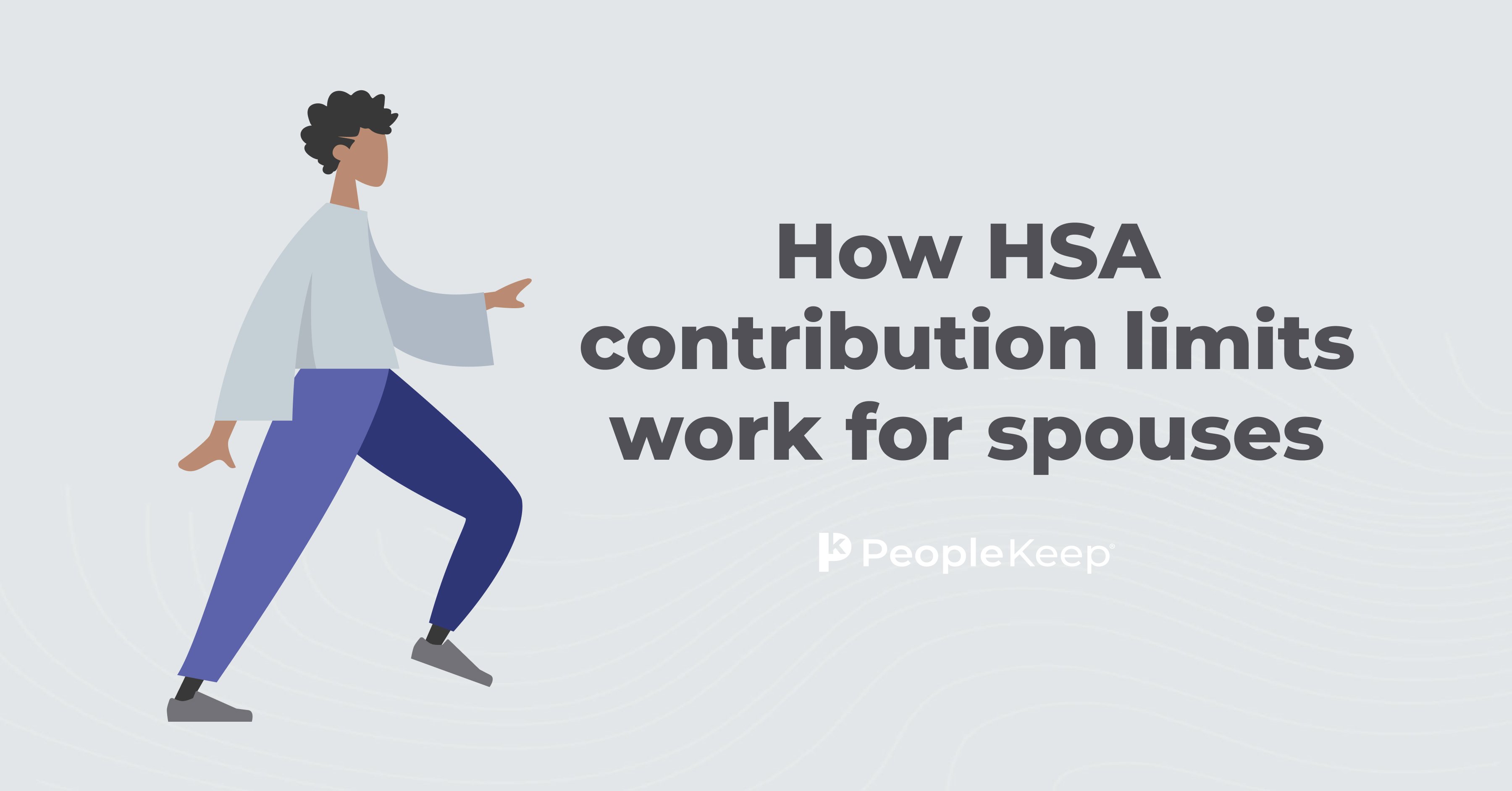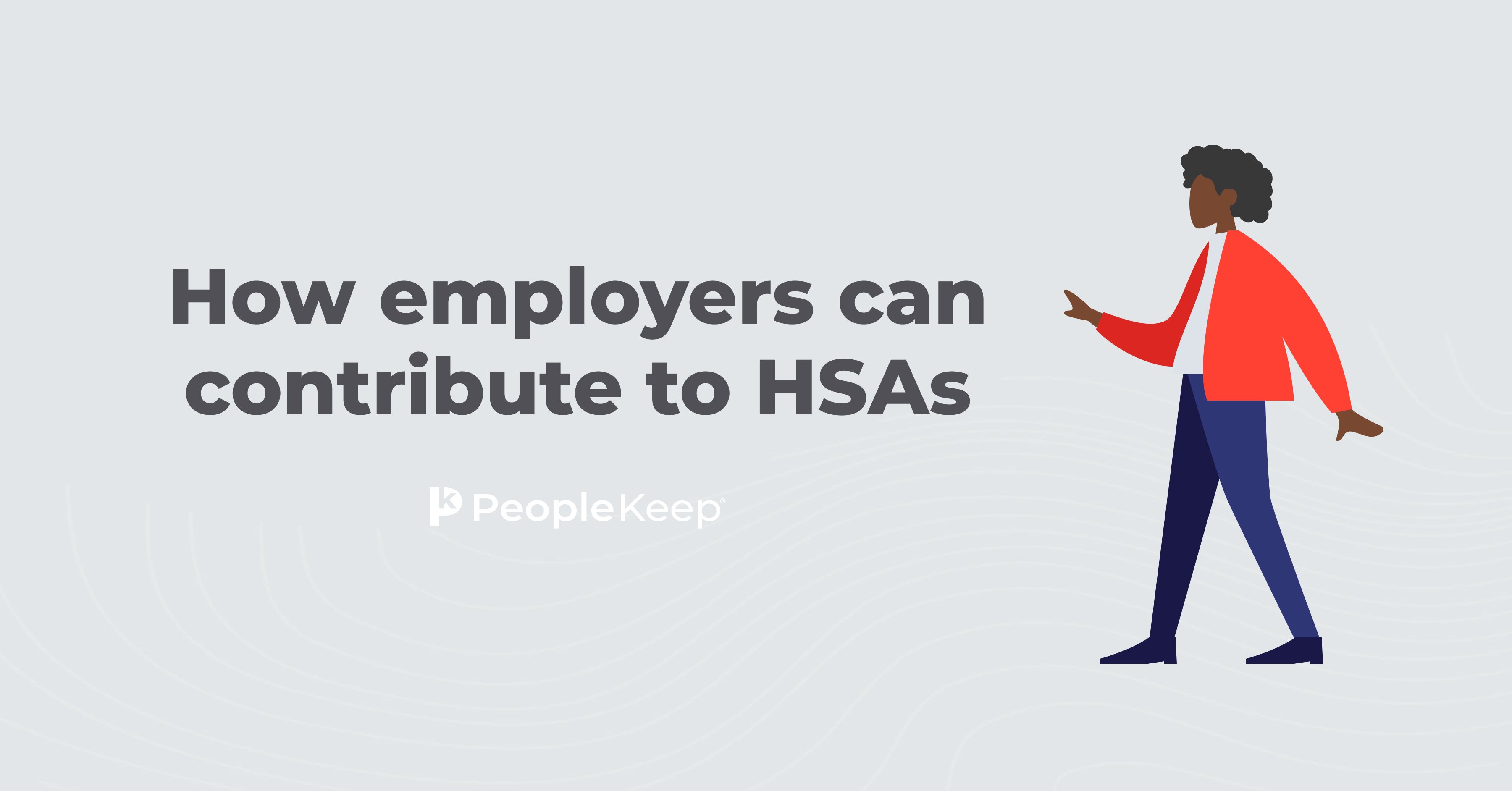Why HSAs don’t work by themselves
By Elizabeth Walker on July 21, 2025 at 1:00 PM
Due to the rising cost of medical care, many small and medium-sized businesses (SMBs) are looking for affordable health benefits options that provide employees with flexibility and value. One solution is a health savings account (HSA) — a special savings account where employers and employees can deposit tax-free money to pay for qualifying healthcare costs.
While an HSA is an excellent option when combined with other benefits, some employers may not realize that HSAs don't work as stand-alone health benefits. In this article, we'll examine how HSAs work, why you can’t offer them independently, and explore other alternatives to group health insurance and HSAs.
Takeaways from this blog post:
- Employees must meet certain requirements to participate in an HSA, such as enrolling in a qualifying high deductible health plan. HSAs also have annual contribution limits that employers and employees can’t exceed.
- While HSAs can be a valuable tax-advantaged account to help workers reach their financial goals, employers may face downsides, such as employees taking their HSA funds when leaving the organization.
- Health reimbursement arrangements (HRAs) and health stipends are alternative options to HSAs. Employees can use HRAs to receive tax-free reimbursements on medical expenses and individual health insurance premiums. Health stipends are taxable but are a flexible and customizable benefit option.
How do HSAs work?
A health savings account is a savings account of pre-tax dollars that your employees can use to pay for medical expenses. Contributions can come from both the employer and the employee, so long as the combined contributions don't exceed the annual contribution amounts the IRS updates yearly.
For 2026, the self-only contribution limit for employers and employees is $4,400. The maximum contribution for family coverage is $8,750. Those 55 or older can make $1,000 in additional funds, known as annual catch-up contributions. An HSA also allows your employees to earn tax-free interest.
HSAs offer a triple tax advantage. Employers and employees can make tax-deductible contributions, investment earnings are tax-free, and employees can make tax-free withdrawals using an HSA debit card to pay for eligible healthcare services and other out-of-pocket costs.
Individuals aged 65 or older can use their HSA funds for non-medical expenses, though the withdrawn funds would then be subject to federal income taxes. However, if your employees are younger than 65 and decide to spend their allowance on non-medical expenses, they'll be subject to tax and an additional 20% tax penalty.
Whether an employer offers one or an individual opens an account, the employee always owns it, and almost any financial institution or credit union can establish it. After an employee leaves their job, all the money in the account—including employer contributions to HSAs—stays with the employee.
To participate in an HSA, an employee must meet the following requirements:
- They’re enrolled in an HSA-qualified high deductible health plan (HDHP)
- The HDHP minimum annual deductibles for HSAs are $1,700 for self-only coverage and $3,400 for family coverage in 2026
- HSA-qualified HDHP out-of-pocket maximum amounts are $8,500 for self-only coverage and $17,000 for family coverage in 2026
- They're not enrolled in any other non-HSA qualified health insurance plan
- This would typically include any plan that doesn't meet the requirements for an HDHP. However, due to the One Big Beautiful Bill Act (OBBBA) passed by Congress on July 3, 2025, all bronze and catastrophic plans sold on public health exchanges also qualify as HSA-eligible HDHPs, even if they don’t meet the usual HDHP criteria1.
- The OBBA also allows individuals to have a direct primary care service arrangement in addition to an HSA.
- They're not eligible to use a general-purpose flexible spending account (FSA)
- They’re not claimed as a dependent on someone else's income tax return
- They're not enrolled in Medicare Parts A & B or Medicaid
Why can't I offer an HSA as a stand-alone benefit?
As mentioned above, for an employee to participate in a health savings account, they must enroll in an HSA-qualified HDHP. Most individuals with an HDHP receive one from their employer, meaning the likelihood that one of your employees would enroll in an HDHP on their own is rare. But, individuals can enroll in an HDHP through the federal or state health insurance exchanges. Without an HDHP, these employees aren’t eligible to participate in the HSA.
In addition, an HSA doesn't cover individual insurance premiums. PeopleKeep customer data shows that individual insurance premiums are employees' largest medical expense. So, if you're not offering a health insurance plan beyond an HSA, your employees must shop for their own health plan and pay for it entirely out of pocket.
Downsides to HSAs
While HSAs can be an excellent health and financial benefit for your employees, there are a few downsides for employers.
As mentioned, employees take their HSA funds with them when leaving your organization. This is because their HSA belongs to them. Some employees use their HSA as a retirement savings vehicle or investment strategy instead of a health benefit. With an HSA, you can't guarantee that your employees will use their HSA as a medical benefit.
Additionally, you have to offer an HDHP for your employees to be eligible for an HSA and the tax perks that come with them. Finally, employees can't use their HSA on monthly premiums, as they can only have an HDHP, not an individual health plan, and the federal government prohibits HSA funds from paying for premiums.
Thankfully, there are other alternatives to HDHPs, HSAs, and traditional health insurers.
Are there other stand-alone health benefits I can offer?
If you're wary of the high costs of traditional group health insurance, an HSA isn't the only alternative employee health plan or supplement to a group health insurance plan. Health reimbursement arrangements (HRAs) and health stipends are excellent options you can offer independently.
Health reimbursement arrangements (HRAs)
An HRA is an IRS-approved, employer-funded health benefit employers use to reimburse employees with tax-free funds for the same HSA-qualified out-of-pocket medical costs — like doctor visits and preventive care. Depending on the type of HRA an employer offers, this can include individual health insurance premiums.
With an HRA, you set a monthly allowance for each employee. Then, your employees will purchase the qualifying medical expenses they need with their own money. They'll then submit proof of those healthcare expenses to you for reimbursement.
Because HRAs are employer-owned — unlike HSAs — any unused funds left at the end of the year stay with you. Moreover, employers only have to reimburse employees when they incur an eligible expense, rather than contributing money to the account monthly like an HSA.
Three of the most popular HRAs are:
- The qualified small employer HRA (QSEHRA). The QSEHRA is for small organizations with fewer than 50 full-time equivalent employees (FTEs). The IRS sets maximum allowance amounts for the QSEHRA annually. With a QSEHRA, you can reimburse employees for more than 200 eligible medical expenses and insurance premiums. Reimbursements are free from income tax for employees as long as they have minimum essential coverage (MEC), such as an individual health insurance plan or coverage through a spouse’s or parent’s group plan.
- The individual coverage HRA (ICHRA). An ICHRA is an excellent option for organizations of all sizes. Employers can set up employee classes to vary allowance amounts and eligibility. Unlike HSAs, there are no minimum or maximum contribution limits for reimbursement. You can reimburse employees for out-of-pocket medical expenses and individual insurance premiums. Employees must have individual health insurance with MEC to participate.
- The group coverage HRA (GCHRA), also known as an integrated HRA. A GCHRA is a way to supplement your existing group health insurance policy, such as an HDHP. This can work as an alternative to offering an HSA. Like the ICHRA, there are no minimum or maximum annual limits. However, like an HSA, you can’t reimburse employees for insurance premiums.
Can I offer an HSA with an HRA?
While an HSA isn't a stand-alone benefit, you can offer it alongside an HRA. This approach often provides the best value to employees. However, employees must meet specific requirements to use both compliantly.
Because employees participating in an HSA must have an HSA-qualified HDHP, all policies the employee uses must also be HSA-qualified, including the HRA.
To ensure that your HRA is HSA-qualified, you'll simply need to offer a “limited-purpose HRA” that only reimburses employees for expenses exempt from the HSA deductible requirement.
These expenses are:
- Health insurance premiums
- Long-term care insurance premiums
- Dental expenses
- Vision expenses
A standard HRA will make an employee ineligible for an HSA because it would cover all qualified expenses, including copays for prescriptions, which aren't exempt.
Suppose you plan to offer an HRA through a benefits provider and want to offer an HSA as well. In that case, you must make sure they give you the ability to limit expenses to just these categories so you can ensure compliance with federal regulations.
Health stipends
A health stipend is another alternative to HSAs and group health insurance coverage. Much like an HRA, a stipend allows you to reimburse employees for their medical expenses. Unlike an HRA, however, there are fewer restrictions on which expenses are eligible for reimbursement.
The IRS considers health stipends taxable income. Therefore, you must report them on your employees' Form W-2s so they can pay federal taxes on the amount. If you have 50 or more FTEs, you can’t offer a stipend instead of a group plan or an ICHRA, as a stipend doesn’t satisfy the Affordable Care Act’s employer mandate.
While a stipend doesn't have the tax advantages of HSAs or HRAs, it can be an extremely flexible option for small organizations looking to provide their first or additional benefit, especially for employees who receive advance premium tax credits (APTC).
Conclusion
With rising medical costs and traditional health plan rates, offering a quality health benefit is essential for employee retention and engagement.
Offering an HSA on its own is an unrealistic option for SMBs. But, combining it with a limited-purpose HRA is an excellent alternative to enrolling eligible employees in an expensive traditional group health insurance plan. Your employees get a flexible benefit that covers their qualifying medical expenses and individual insurance premiums, while you get a cost-controlled plan you can consistently budget for month to month.
If you're ready to offer your employees a health benefit, PeopleKeep can help. Our personalized benefits administration software makes setting up and managing HRAs in minutes each month easy.
Schedule a call with an HRA specialist to see how HRAs can work for your organization.
This blog article was originally published on July 28, 2021. It was last updated on July 21, 2025.
Check out more resources
See these related articles

How HSA contribution limits work for spouses
In this blog, we go over HSA contribution regulations, benefits of having two separate HSAs, and how they can work with health reimbursement arrangements.

What to do if your group health plan doesn't qualify for an HSA
If your group health plan isn’t HSA-qualified, explore HSA alternatives that still offer tax advantages and help employees manage healthcare costs.

How employers can contribute to HSAs
This blog will define HSAs, discuss how employers can contribute to an HSA, and provide other health benefit options.



